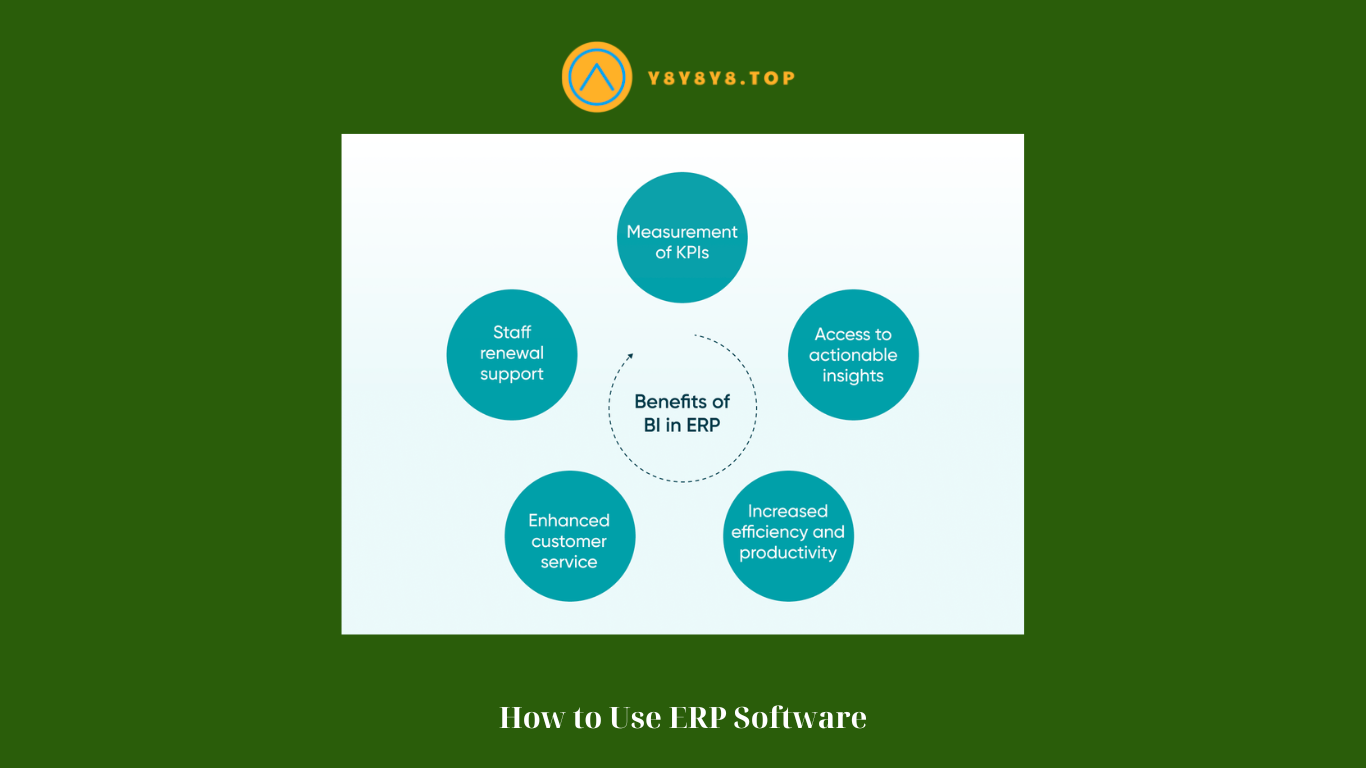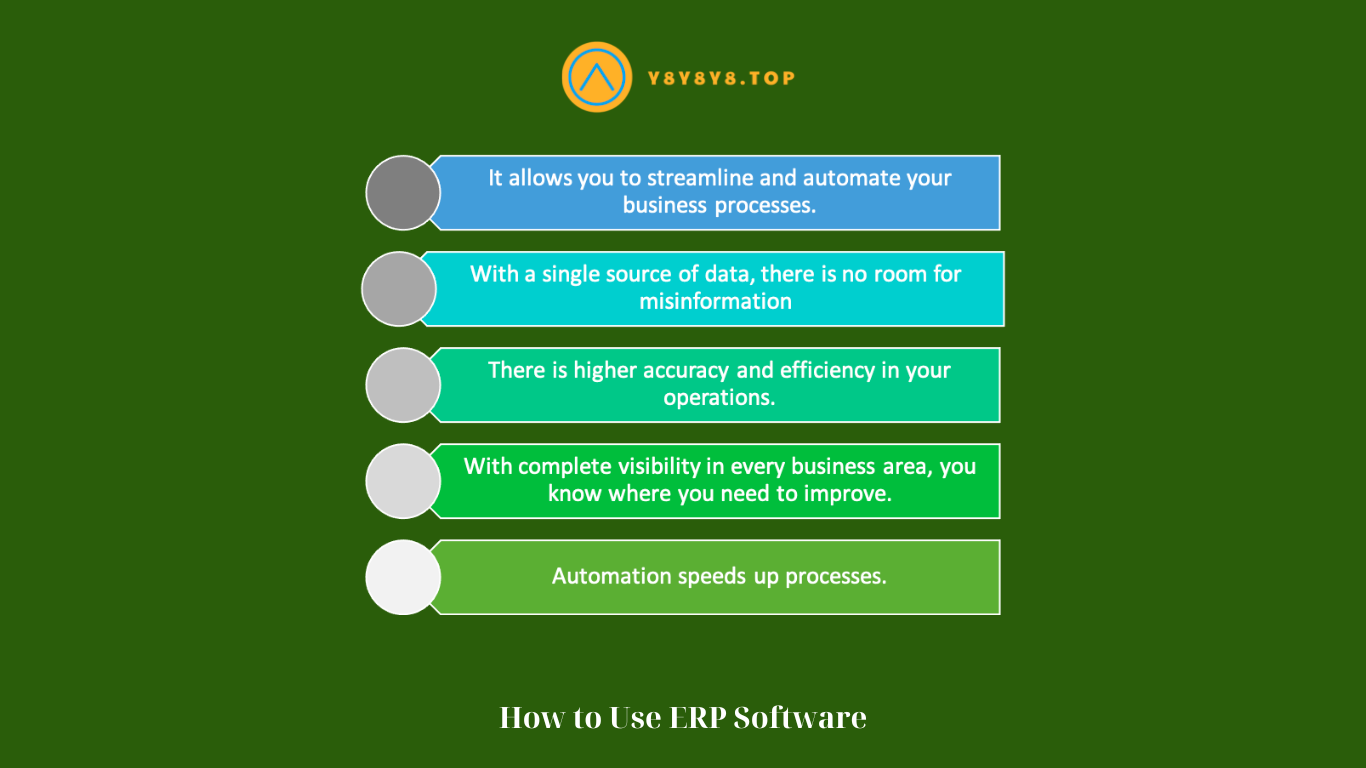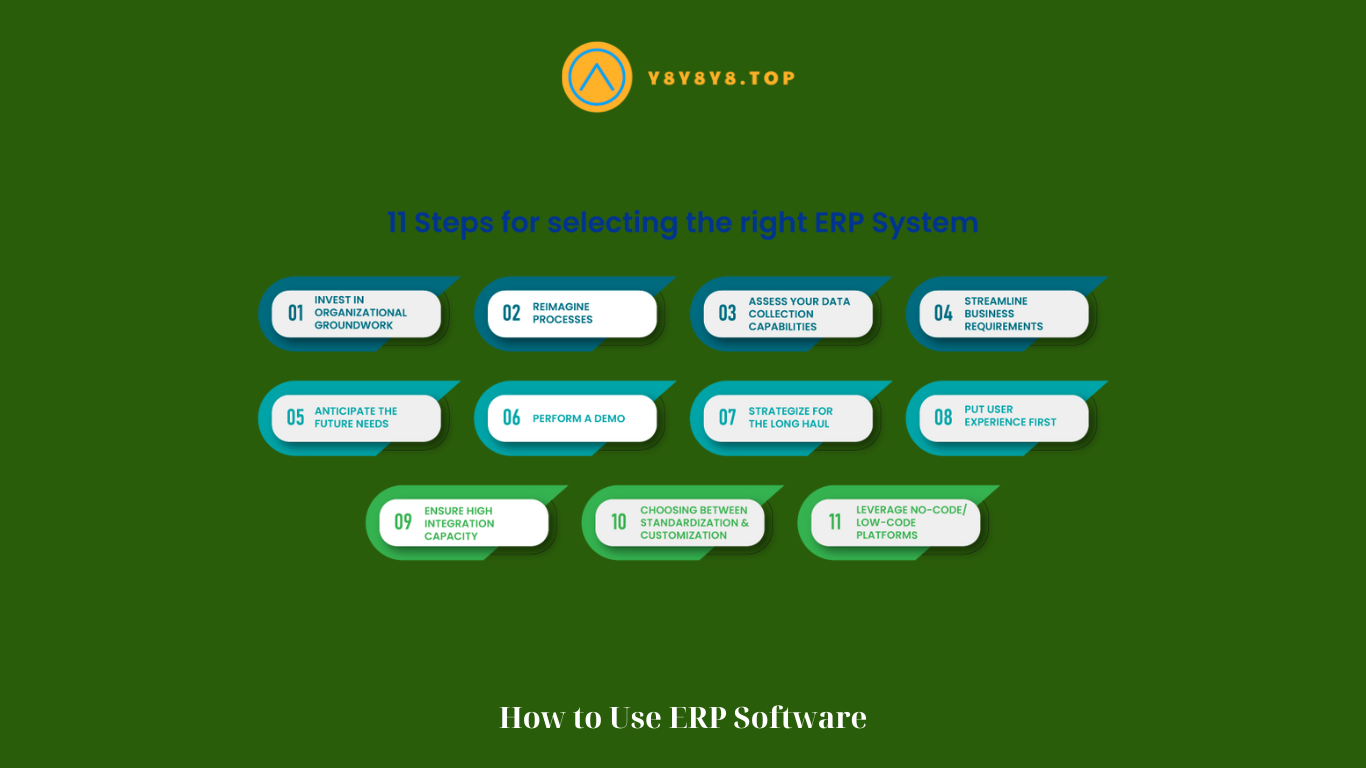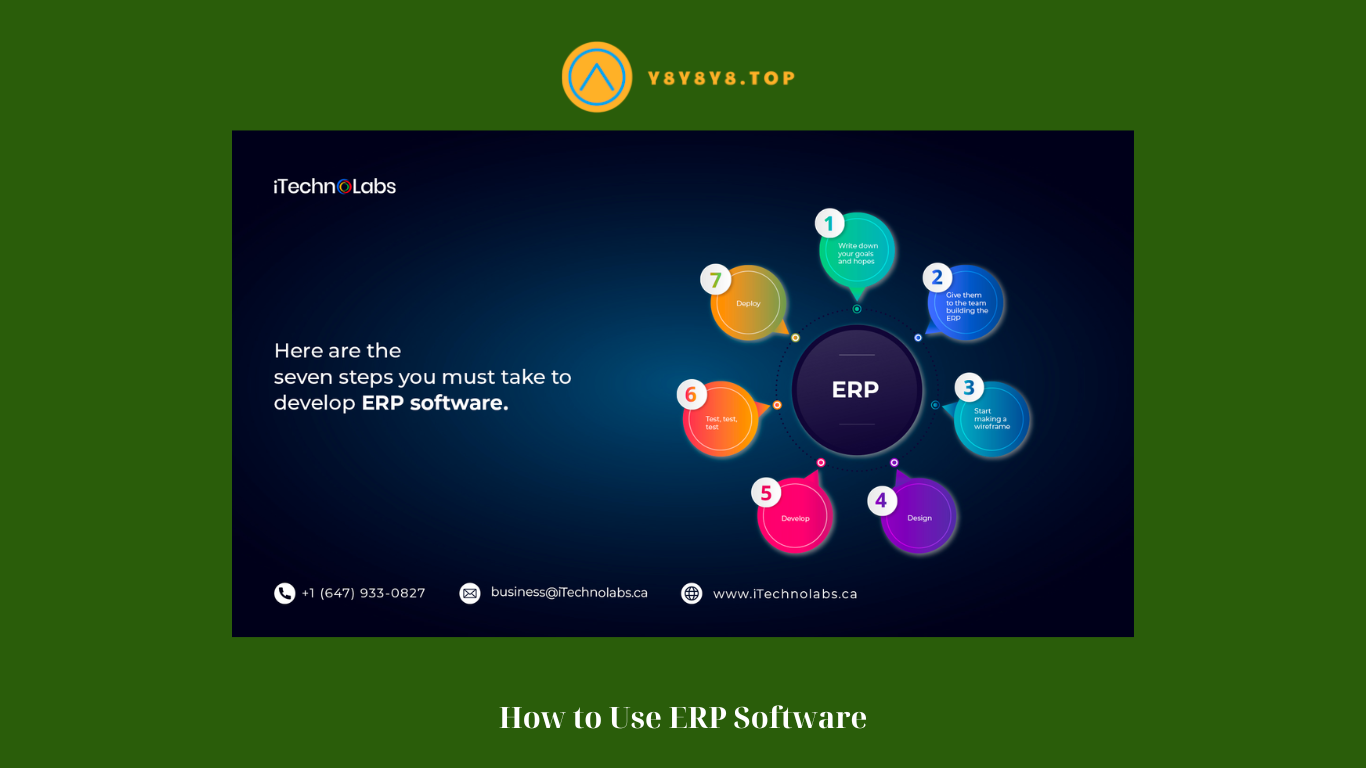How to Use ERP Software: A Step-by-Step Guide for Beginners
How to Use ERP Software (ERP) software has become an essential tool for businesses of all sizes, helping them streamline their operations, improve efficiency, and make informed decisions. However, for those new to ERP software, it can seem overwhelming. In this comprehensive guide, we will walk you through the process of using ERP software, from understanding its benefits to implementing it effectively in your organization. By the end of this article, you will have a clear understanding of how to utilize ERP software to its full potential.
How to Use ERP Software: A Step-by-Step Guide for Beginners

I. Understanding ERP Software:
- Defining ERP: ERP software integrates various How to Use ERP Software functions, including finance, human resources, inventory management, manufacturing, and more, into a centralized system. It allows for seamless data flow and collaboration across departments, providing a holistic view of the organization.
- Benefits of ERP Software: Implementing ERP software offers several advantages, such as improved efficiency, enhanced data accuracy, better decision-making, increased collaboration, and cost savings.
II. Assessing Your Business Needs:
- Identify Pain Points: Before selecting an ERP software, it is crucial to How to Use ERP Software the pain points and challenges your organization is facing. This will help you determine the specific features and functionalities you require from the software.
- Defining Objectives: Clearly define your business objectives and align them with the capabilities of the ERP software. Whether it is streamlining processes, reducing costs, or improving customer service, having clear objectives will guide your software selection.
III. Selecting the Right ERP Software:
- Research and Evaluate: Conduct thorough research on available How to Use ERP Software software options and evaluate them based on your business needs. Consider factors such as scalability, customization options, vendor reputation, and customer support.

- Demo and Trial: Request demos and trials of shortlisted ERP software to get hands-on experience. This will help you assess their user-friendliness, functionality, and compatibility with your existing systems.
IV. Implementing ERP Software:
- Planning and Preparation: Create a detailed implementation plan, including timelines, resource allocation, and key milestones. Involve stakeholders from different departments and communicate the plan to ensure a smooth transition.
- Data Migration and Integration: Ensure a seamless transfer of data from your existing systems to the How to Use ERP Software software. Collaborate with your IT team to handle data migration and integration effectively, minimizing disruptions.
- Training and User Adoption: Provide comprehensive training to your employees on how to use the ERP software. Encourage user adoption by highlighting the benefits and addressing any concerns or resistance that may arise.
V. Navigating the ERP Software:
- User Interface: Familiarize yourself with the ERP software’s user interface, menus, and navigation. Spend time exploring different modules and functionalities to understand how they relate to your business processes.
- Core Modules: ERP software typically includes core modules such as finance, supply chain management, inventory, human resources, and customer relationship management. Understand how these modules work and customize them to align with your specific requirements.

- Reporting and Analytics: Take advantage of the reporting and analytics capabilities of the ERP software. Generate customized reports, analyze data trends, and gain valuable insights to make data-driven decisions.
VI. Ongoing Maintenance and Support:
- Regular Updates: Stay up to date with the latest updates and patches released by the ERP software vendor. Regularly update the software to ensure you have access to new features, enhanced security, and bug fixes.
- Technical Support: Establish a relationship with the ERP software vendor for ongoing technical support. They can assist with troubleshooting, answering queries, and providing guidance on optimizing the software’s usage.
VII. Continuous Improvement:
- Monitor and Evaluate: Continuously monitor the performance of your ERP software and evaluate its impact on your business. Identify areas for improvement and implement necessary changes to enhance efficiency and productivity.
- User Feedback: Encourage feedback from your employees regarding the ERP software. Their insights can help identify pain points, suggest improvements, and drive user adoption.
VIII. Customization and Integration:
- Tailoring the Software: ERP software often allows customization to meet specific business requirements. Explore the customization options available and configure the software to align with your unique processes and workflows.
- Integration with Existing Systems: ERP software should seamlessly integrate with your existing systems, such as accounting software, CRM systems, or inventory management tools. Ensure that the How to Use ERP Software software you choose can integrate effectively with your current infrastructure.
IX. Security and Data Protection:
- Data Security Measures: How to Use ERP Software software deals with sensitive and confidential business data. Implement robust security measures such as user access controls, data encryption, and regular backups to protect your data from unauthorized access or loss.
- Compliance with Regulations: Depending on your industry, you may have specific regulatory requirements for data privacy and security. Ensure that the ERP software complies with relevant regulations, such as GDPR or HIPAA, to avoid any legal or compliance issues.
X. Scalability and Growth:
- Scalability Options: As your business grows, your ERP software should be able to accommodate increased data volume, user numbers, and transactional demands. Choose a scalable ERP solution that can grow with your organization without significant disruptions.
- Expansion into New Markets: If you plan to expand into new markets or introduce new product lines, consider whether the ERP software can handle the additional complexities and requirements associated with such expansions.
XI. Collaboration and Communication:
- Enhancing Collaboration: ERP software facilitates collaboration by providing a centralized platform for employees to share information, collaborate on projects, and communicate effectively across departments. Encourage employees to utilize these features to improve teamwork and productivity.
- Real-time Communication: ERP software often includes communication tools such as messaging systems or notification features. Leverage these tools to enable real-time communication and keep employees informed about important updates or changes.
XII. Continuous Training and Support:
- Ongoing Training Programs: Offer regular training sessions to keep your employees up to date with new features, enhancements, and best practices related to the How to Use ERP Software software. This will ensure that they are making the most of the software’s capabilities.
- Internal Support System: Establish an internal support system, such as a designated support team or a knowledge base, to address user queries, troubleshoot issues, and provide guidance. Encourage employees to seek support whenever they encounter challenges while using the ERP software.
XIII. Evaluating Return on Investment (ROI):
- Measuring ROI: Assess the impact of How to Use ERP Software software on your business by analyzing key performance indicators (KPIs) such as cost savings, increased productivity, reduced inventory holding costs, or improved customer satisfaction. Regularly review and measure the ROI to determine the effectiveness of the software implementation.
- Continuous Improvement Initiatives: Based on How to Use ERP Software analysis, identify areas where further improvements can be made. This could involve optimizing processes, refining workflows, or leveraging additional features of the ERP software to enhance efficiency and achieve higher returns.
Conclusion:
Effectively using ERP software is essential for maximizing its benefits and driving organizational growth. By understanding the fundamentals of ERP software, assessing your business needs, selecting the right software, implementing it meticulously, and continuously improving its usage, you can leverage How to Use ERP Software software to streamline your operations, enhance decision-making, and achieve your business objectives. Embrace the power of ERP software and embark on a journey towards improved efficiency and success.





